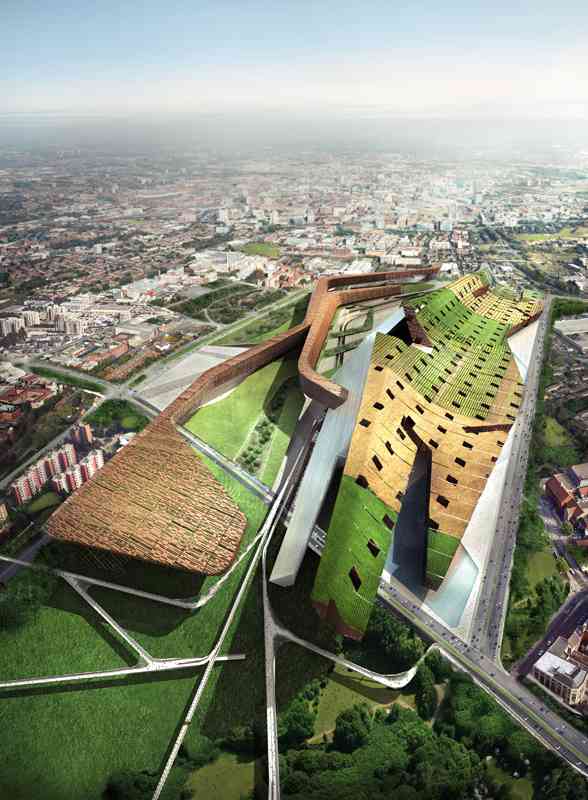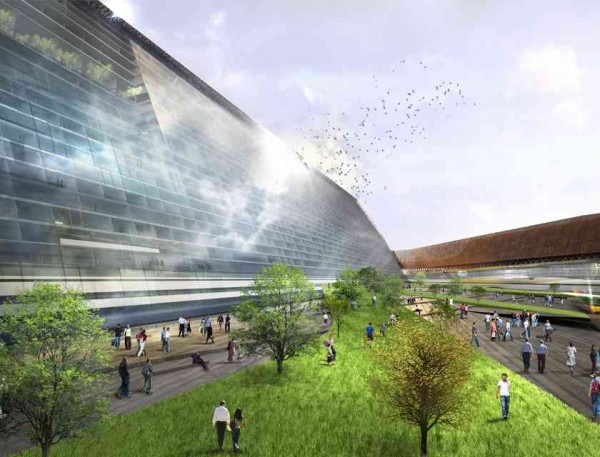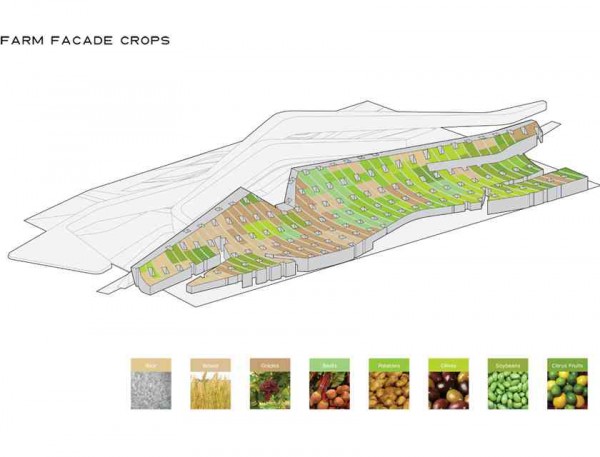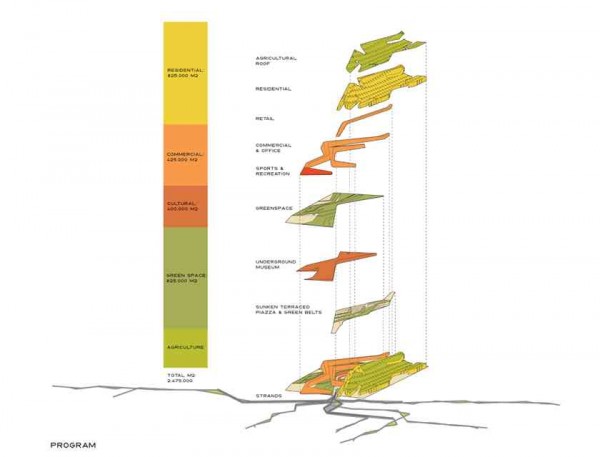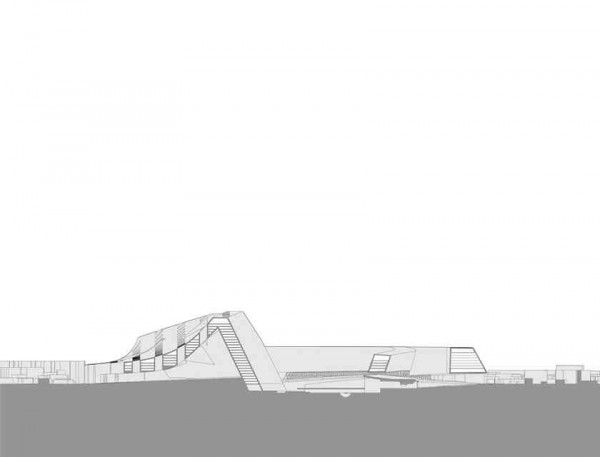Award-winning firm Studio SHIFT unveiled their proposal for mixed-use housing in the periphery of Milan, Italy. Mario Cipresso is the founder of the Santa Monica-based studio and commented on the project: “The project is one of twelve proposals located on the periphery of the historic city center offering conceptual solutions for the densification of Milano. Each proposal injects 25,000 inhabitants into the existing fabric of Milano for a total population increase of 300,000.
The radical nature of this undertaking, specifically the insertion of twenty-five thousand new inhabitants at the site, on the periphery of the cultural and economic center of the city, requires an equally radical response. The population increase will most certainly impose enormous demands on existing infrastructure and the social and economic well-being of the population will face new strains.
In order to address this situation, our proposal employs a comprehensive strategy that simultaneously establishes a self-sustaining community and one that seeks to integrate programmatically and physically with the existing city.
In response to the outlying agricultural lands to the south of the site, the ground plane is raised and bent towards the southern sky for optimal solar exposure. This surface is then developed as an arable façade sheltering the new residential development. A patchwork of crops is then planted based on ideal positions for each species vis-a-vis solar exposure and water retention. An integrated mechanicalmovement system allows workers to traverse the agriculturally laden façade/farm in carts that travel along a network of rails and facilitate the harvesting of crops.
The operation of raising of the ground plane and bending it skyward allows for the insertion of residential program beneath with two highly differentiated living conditions. Below the agricultural façade on the south, courtyard apartments are inserted while the north-facing apartments consist of modules arranged in a large, glazed mosaic. The void that results from this ground manipulation is articulated as a multi-level, sunken piazza with a direct connection to a proposed extension of the existing rail line. Envisioned as the heart of the project, this public space is intended to provide opportunities for both active and passive recreation as well as provide a physical connection to the new office, commercial and museum program on the northern edge of the site. It also serves to connect the project with a new sports facility to the west and the existing urban fabric to the east.
In much the same way that the existing rail systems converge on one location and then separate and infiltrate the larger city, the new programs congregate, intersect and disperse to serve the population.
With a disproportionate number of key cultural institutions in the historic center of the city and the city center’s resulting lack of green space, the proposal seeks to respond to these deficiencies by creating an inversion of the existing program distribution. As the infrastructural strands reach out towards the center of the city, they integrate pedestrian movement with green space or agricultural
production nodes. As those same strands and nodes approach theproposed project they address the lack of cultural amenities on the outer edge of the city. The intention is to integrate the new proposal
into the city at a programmatic level, bringing the people closer to their food, services and goods, and reducing the need for extensive mobility.”

